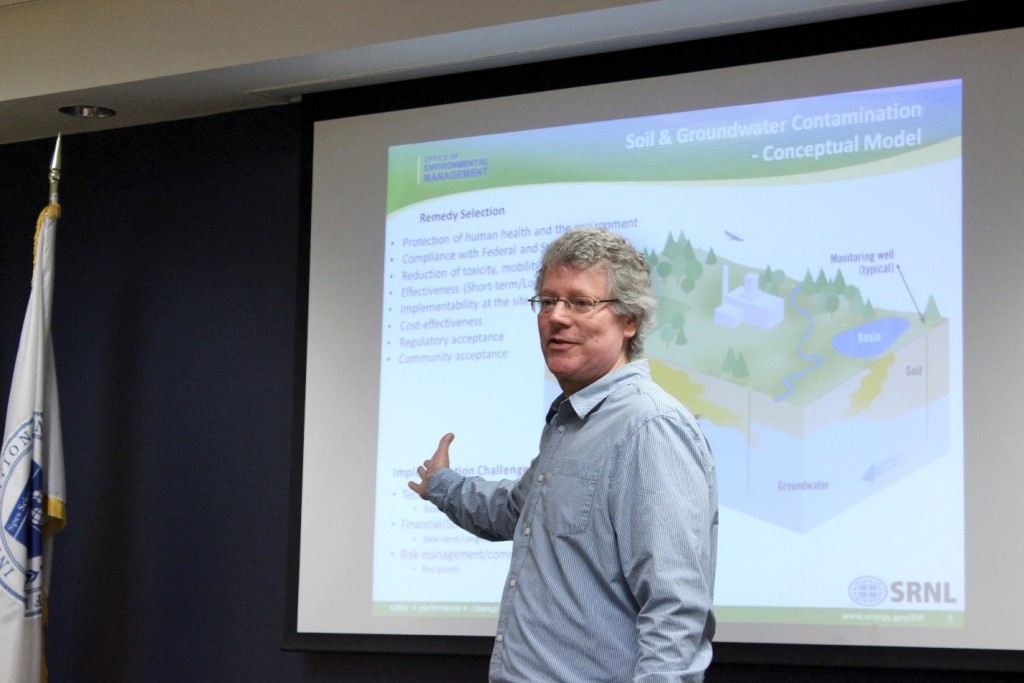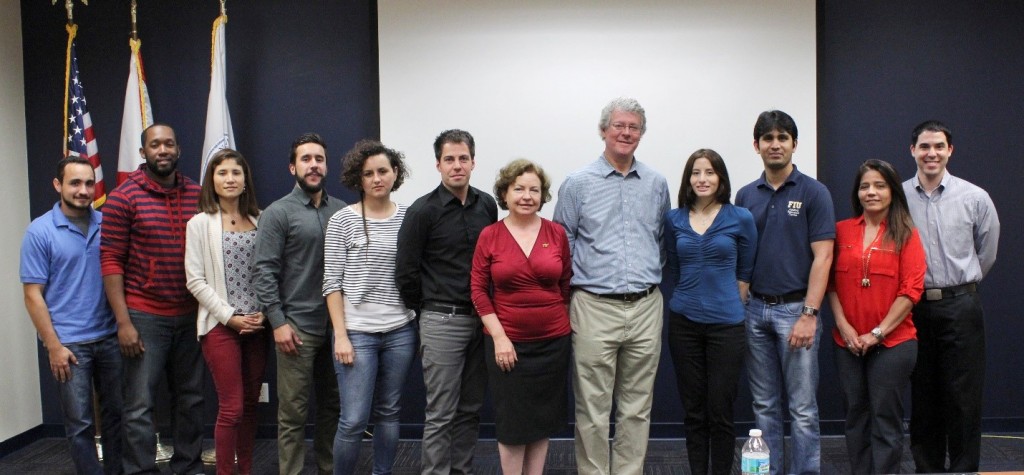FIU-ARC held the DOE Fellows lecture series on April 8, 2015 featuring Dr. Miles Denham from Savannah River National Laboratory (SRNL). Dr. Denham joined SRNL as a research geochemist after obtaining his Ph.D. from Texas A&M in 1992. He has been instrumental in developing innovative treatments for metals and radionuclides including mercury, uranium, strontium-90, technetium-99, and iodine-129. Dr. Denham has been the lead geochemist on several projects to transition active remediation systems (e.g., pump-and-treat) to more passive systems.
The title of Dr. Denham’s presentation was “Helping Nature Heal – Enhanced Attenuation.” Dr. Denham discussed the soil and groundwater challenges/limitations at the Savannah River Site (SRS), remedy selection criteria, active and passive remediation technologies and enhanced natural remediation. He talked about the various technologies that are being applied at SRS to remediate contaminants such as uranium, strontium and iodine. After the lecture series, Dr. Denham toured the ARC laboratories where ARC scientists and researchers showcased various ongoing research activities to support DOE-EM’s mission.

Dr. Miles Denham, at DOE Fellows Lecture Series

Dr. Miles Denham with ARC staff, DOE Fellows and students
FIU-ARC is supporting SRS by working in close collaboration with Drs. Miles Denham and Brian Looney on various environmental remediation activities.
Dr. Denham also participated in DOE Fellow Hansell Gonzalez’s Ph.D. proposal defense titled “Unrefined Humic Substances as a Potential Low-Cost Remediation Method for Acidic Groundwater Contaminated with Uranium in Acidic Conditions.” Hansell Gonzalez participated in an internship at SRNL in summer 2014 under the mentorship of Miles Denham and studied the sorption and desorption of an unrefined humic substance onto SRS sediments. Hansell also studied the fraction of humic molecules sorbed on the sediment by studying the E4/E6 ratio and EET/EBZ ratios. Based on his internship research, Hansell prepared a technical reported titled, “Study of an Unrefined Humate Solution as a Possible Remediation Method for Groundwater Contamination.